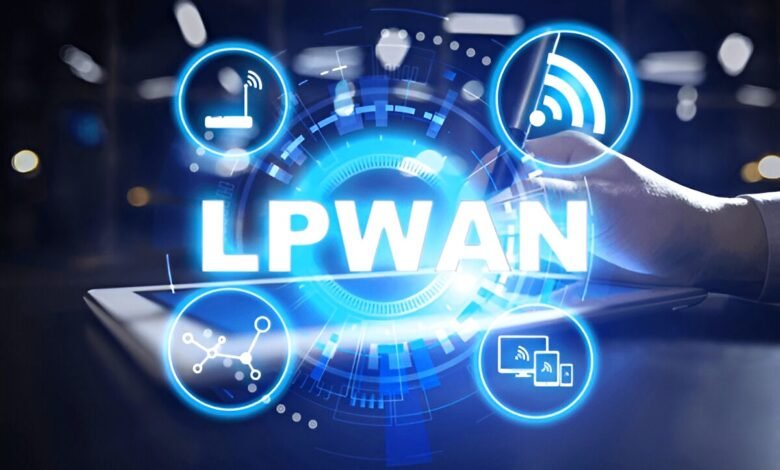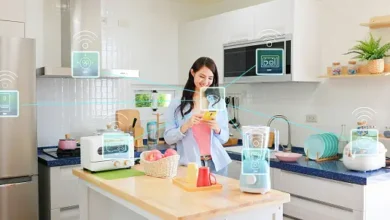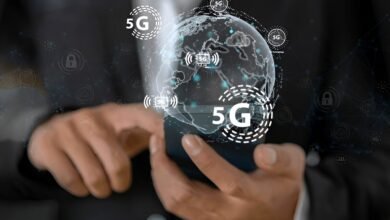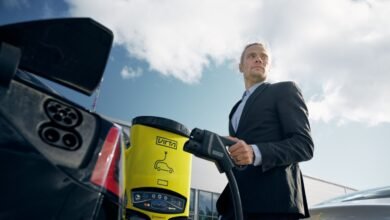How LPWAN is Revolutionizing IoT in Germany
LPWAN is revolutionizing IoT in Germany by enabling long-range communication with minimal power consumption, making it ideal for a wide range of applications.

The Internet of Things (IoT) is transforming industries across the globe, and Germany is no exception. As one of the leading technological hubs in Europe, Germany is at the forefront of adopting innovative solutions to enhance connectivity, efficiency, and sustainability. One of the most significant advancements in this realm is the adoption of Low Power Wide Area Network (LPWAN) technology. LPWAN is revolutionizing IoT in Germany by enabling long-range communication with minimal power consumption, making it ideal for a wide range of applications. In this article, we will explore how LPWAN is reshaping the IoT landscape in Germany, delving into its benefits, applications, and future potential.
1. Understanding LPWAN: The Backbone of IoT Connectivity
What is LPWAN?
LPWAN, or Low Power Wide Area Network, is a type of wireless telecommunication network designed to allow long-range communications at a low bit rate among connected devices. Unlike traditional cellular networks, LPWAN is optimized for low power consumption, making it ideal for IoT devices that need to operate for years on a single battery charge. LPWAN technologies such as LoRaWAN, Sigfox, and NB-IoT are gaining traction in Germany due to their ability to support massive IoT deployments.
Why LPWAN is Ideal for IoT
LPWAN offers several advantages that make it particularly well-suited for IoT applications:
- Long Range: LPWAN can cover distances of up to 10-15 kilometers in rural areas and 2-5 kilometers in urban environments, making it ideal for connecting devices spread over large areas.
- Low Power Consumption: LPWAN devices can operate on battery power for several years, reducing the need for frequent maintenance and battery replacements.
- Cost-Effective: LPWAN networks are relatively inexpensive to deploy and maintain, making them accessible for a wide range of industries.
- Scalability: LPWAN can support thousands of devices within a single network, making it scalable for large IoT deployments.
2. LPWAN in Germany: A Growing Ecosystem
Germany’s IoT Landscape
Germany is one of the leading countries in Europe when it comes to IoT adoption. The country’s strong industrial base, coupled with its commitment to innovation, has created a fertile ground for IoT technologies. According to a report by the German IoT Council, the number of connected devices in Germany is expected to reach 1.6 billion by 2025. This rapid growth is driven by the increasing demand for smart solutions in various sectors, including manufacturing, agriculture, healthcare, and smart cities.
LPWAN Adoption in Germany
Germany has been quick to adopt LPWAN technologies, with several cities and regions already deploying LPWAN networks. For instance, Berlin, Hamburg, and Munich have implemented LoRaWAN networks to support smart city initiatives. Additionally, German companies are actively developing LPWAN-based solutions, further driving the adoption of this technology.
3. Key Applications of LPWAN in Germany
Smart Cities
One of the most prominent applications of LPWAN in Germany is in the development of smart cities. LPWAN enables cities to deploy a wide range of IoT devices that can monitor and manage urban infrastructure efficiently.
- Smart Lighting: LPWAN-connected streetlights can be remotely controlled and monitored, allowing cities to optimize energy usage and reduce costs.
- Waste Management: Smart waste bins equipped with LPWAN sensors can notify waste collection services when they are full, improving efficiency and reducing operational costs.
- Environmental Monitoring: LPWAN sensors can monitor air quality, noise levels, and other environmental factors, providing valuable data for urban planning and public health initiatives.
Industrial IoT (IIoT)
Germany’s strong manufacturing sector, often referred to as Industry 4.0, is another area where LPWAN is making a significant impact. LPWAN enables factories to connect a wide range of devices and sensors, facilitating real-time monitoring and automation.
- Predictive Maintenance: LPWAN sensors can monitor the condition of machinery and predict when maintenance is needed, reducing downtime and maintenance costs.
- Asset Tracking: LPWAN can be used to track the location and status of assets within a factory, improving inventory management and reducing losses.
- Energy Management: LPWAN-connected sensors can monitor energy usage in real-time, helping factories optimize energy consumption and reduce costs.
Agriculture
Agriculture is another sector in Germany that is benefiting from LPWAN technology. LPWAN enables farmers to deploy IoT devices that can monitor and manage agricultural operations more efficiently.
- Soil Monitoring: LPWAN sensors can monitor soil moisture, temperature, and nutrient levels, providing farmers with valuable data to optimize irrigation and fertilization.
- Livestock Tracking: LPWAN can be used to track the location and health of livestock, improving animal welfare and reducing losses.
- Crop Monitoring: LPWAN-connected drones and sensors can monitor crop health and detect pests or diseases early, allowing farmers to take timely action.
Healthcare
In the healthcare sector, LPWAN is enabling the development of innovative solutions that improve patient care and reduce costs.
- Remote Patient Monitoring: LPWAN-connected devices can monitor patients’ vital signs remotely, allowing healthcare providers to offer personalized care and reduce hospital visits.
- Asset Tracking: LPWAN can be used to track the location of medical equipment, reducing losses and improving efficiency.
- Environmental Monitoring: LPWAN sensors can monitor environmental conditions in healthcare facilities, ensuring a safe and comfortable environment for patients and staff.
4. Challenges and Opportunities
Challenges
While LPWAN offers numerous benefits, there are also challenges that need to be addressed to fully realize its potential in Germany.
- Interoperability: With multiple LPWAN technologies available, ensuring interoperability between different networks and devices can be challenging.
- Regulatory Hurdles: The deployment of LPWAN networks may be subject to regulatory restrictions, which can slow down adoption.
- Security Concerns: As with any IoT technology, security is a major concern. Ensuring the security of LPWAN networks and devices is crucial to prevent data breaches and cyber-attacks.
Opportunities
Despite these challenges, LPWAN presents significant opportunities for Germany.
- Innovation: LPWAN is driving innovation across various sectors, enabling the development of new products and services that were previously not possible.
- Sustainability: LPWAN’s low power consumption and ability to optimize resource usage make it a key enabler of sustainability initiatives.
- Economic Growth: The adoption of LPWAN is expected to contribute to economic growth by creating new business opportunities and jobs in the IoT sector.
5. The Future of LPWAN in Germany
Continued Growth
The adoption of LPWAN in Germany is expected to continue growing in the coming years. As more industries recognize the benefits of LPWAN, the demand for LPWAN-based solutions is likely to increase. Additionally, advancements in LPWAN technology, such as the development of 5G-compatible LPWAN networks, are expected to further drive adoption.
Integration with Other Technologies
LPWAN is likely to be integrated with other emerging technologies, such as artificial intelligence (AI) and edge computing, to create more advanced IoT solutions. For example, AI algorithms can be used to analyze data collected by LPWAN sensors, providing deeper insights and enabling more intelligent decision-making.
Government Support
The German government has been supportive of IoT initiatives, and this support is expected to continue. Government funding and policies that promote the adoption of IoT technologies, including LPWAN, will play a crucial role in driving future growth.
Conclusion
LPWAN is revolutionizing IoT in Germany by enabling long-range, low-power connectivity that is ideal for a wide range of applications. From smart cities and industrial IoT to agriculture and healthcare, LPWAN is driving innovation and efficiency across various sectors. While there are challenges to overcome, the opportunities presented by LPWAN are immense, and its adoption is expected to continue growing in the coming years. As Germany continues to embrace IoT technologies, LPWAN will play a crucial role in shaping the future of connectivity and innovation in the country.
By leveraging the power of LPWAN, Germany is not only enhancing its technological capabilities but also paving the way for a more connected, efficient, and sustainable future. As the IoT ecosystem continues to evolve, LPWAN will undoubtedly remain at the forefront of this transformation, driving progress and innovation across industries.











